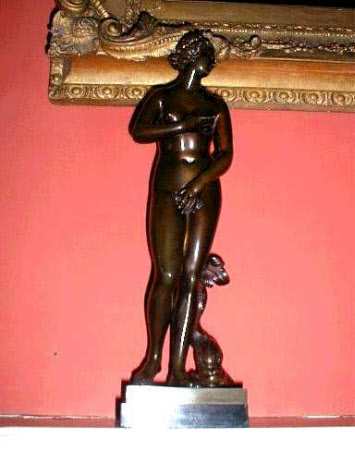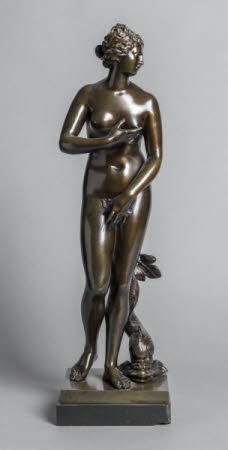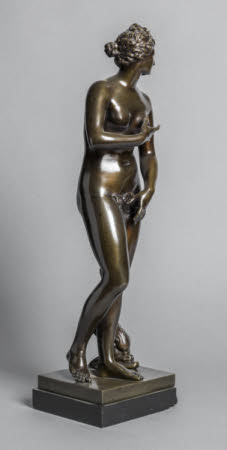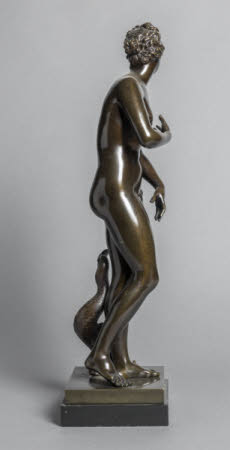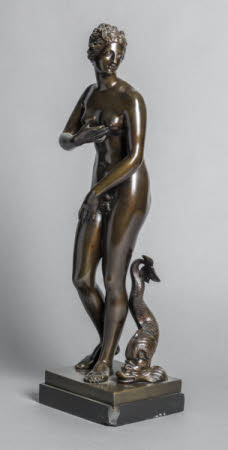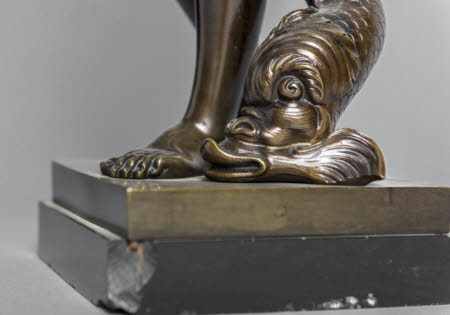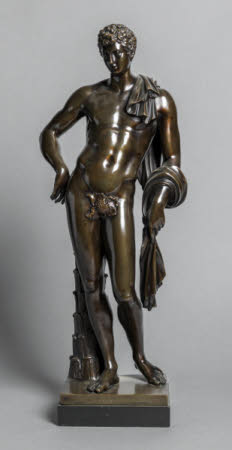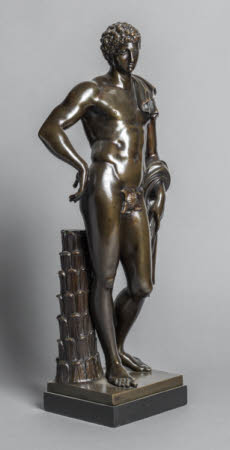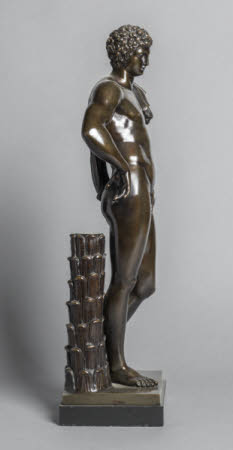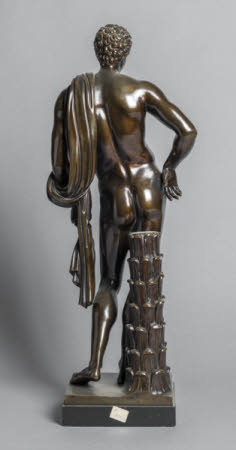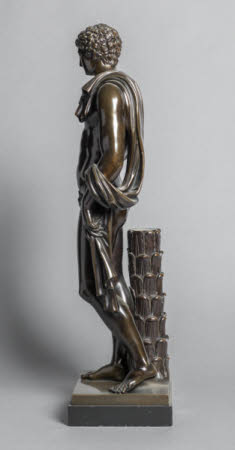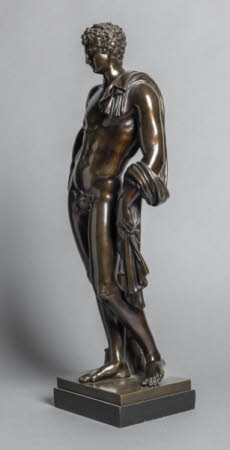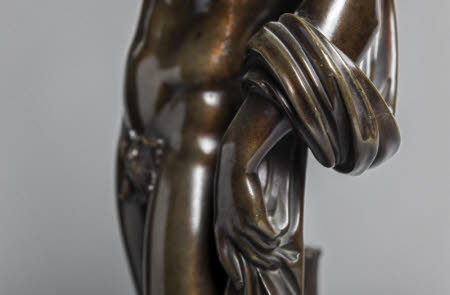The Venus de' Medici and the Belvedere Antinous
Category
Art / Sculpture
Date
1700 - 1799
Materials
Bronze on bronze and marble bases
Measurements
490 x 145 x 130 mm
Place of origin
Italy
Order this imageCollection
Belton House, Lincolnshire
NT 435365
Summary
Bronze on bronze plinth and black marble base, The Venus de' Medici and The Belvedere Antinous, Italian, 1700-99. A pair of bronze figures of The Venus de' Medici and The Belvedere Antinous, after the antique, mounted on bronze and marble bases.
Full description
Venus, nude, is emerged from the sea with a dolphin at her feet (separately cast). Antinous stands in contrapposto against a tree (separately cast), his right hand resting on his hip and a chlamys thrown over his left shoulder and wrapped around his forearm (separately cast). The arms of both figures have been separately cast and sleeve joined below the shoulders; the fig leaves are later additions. The bronzes are adapted reproductions of celebrated marble sculptures in the Uffizi Gallery, Florence, and the Capitoline Museum, Rome. The Venus de Medici (Uffizi), a Hellenistic marble, is believed to have originated from a Praxitelean bronze and was first recorded in the Villa Medici, Rome, 1638, before being moved to Florence and later the Tribuna of the Uffizi in 1688 (Haskell and Penny 1981, no.88, pp.325-8). The Antinous (Capitoline), is now identified as Hermes and is believed to be a Hadrianic marble copy after a Praxitelean bronze. It was purchased in 1543 by Pope Paul III and was displayed the courtyard of the Belvedere Palace, Rome (Haskell and Penny 1981, no.4, pp.141-3). Bronze reductions of both sculptures were immensely popular throughout the 18thcentury, particularly in the Grand Tour market. Alice Rylance-Watson September 2018
Provenance
Purchased with a grant from the National Heritage Memorial Fund (NHMF) from Edward John Peregrine Cust, 7th Baron Brownlow, C. St J. (b.1936) in 1984.
Credit line
Belton House, The Brownlow Collection (acquired with the help of the National Heritage Memorial Fund by the National Trust in 1994)
